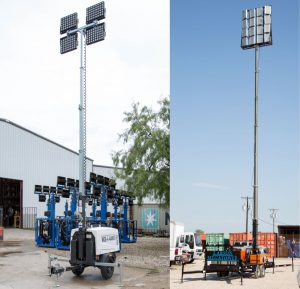 According to the Red Cross, the recent onslaught of persistent flooding in Louisiana has surpassed the devastating floods that came with Hurricane Sandy in 2012. Without warning, the state received a whopping 6.9 trillion gallons of rainfall in one week (based on a report from CNN). Over 40,000 homes were affected by the flood, resulting $30 million in damages.
According to the Red Cross, the recent onslaught of persistent flooding in Louisiana has surpassed the devastating floods that came with Hurricane Sandy in 2012. Without warning, the state received a whopping 6.9 trillion gallons of rainfall in one week (based on a report from CNN). Over 40,000 homes were affected by the flood, resulting $30 million in damages.
Scientists speculate that more natural disasters will hit the United States from all angles in the near future, as global warming continues to cause problems for regions that are unprepared for record-breaking floods and blizzards. Larson Electronics is here to help by providing a reliable selection of outdoor luminaries for consumers, businesses and organizations in areas that are affected by natural disasters.
Benefits of Scene Lighting and Light Plants
Scene lighting is used to support several different types of operations during large-scale calamities. Firefighters rely on bright, powerful lights, such as LED megatowers, light plants and portable lamps, when setting up temporary access points for rescue missions. Law enforcement and military groups may setup remote fixtures for security perimeter lighting, allowing volunteers to continue working late into the night. On a residential level, homeowners may utilize luminaries to locate family members stranded around the location. The fixtures may also serve as emergency notification beacons for helicopter pilots to pick up on while scouting disaster zones for survivors.
Other benefits of scene lighting include the following:
- Reduce errors during emergency operations
- Minimize use of chemical light sticks
- Improve efficiency during response to disasters
- Boost security by discouraging theft and other criminal acts
- Increase awareness and visual clarity in remote bases
- Improve signaling for incoming aircraft and ground vessels during rescue missions
In the aftermath of natural disasters, light plants may continue to support rescue operations. Temporary food distribution centers need fixtures when monitoring daily rations on the site. If the location’s grid was affected by the catastrophe, portable luminaries must be deployed to sustain operations. Having a robust lighting system at one’s disposal could also shorten time spent on rebuilding basic infrastructure. With easily deployable luminaries, workers could start restoration the moment they arrive on the site and continue through the night without interruption.
Battery and Generator Tower Applications
 Destructive floods can easily damage a city’s electrical grid by destroying powerlines and large generators around the area. Restoration efforts are usually conducted after the catastrophe, leaving most people stranded for days or weeks, while waiting for rainfall to stop and floodwaters to subside. During this time, rescue crews and temporary relief sites may use battery or generator towers to support a wide range of tools, such as communication devices, radios, portable lights, security cameras, laptops, smartphones and monitors. For groups with access to fuel, diesel powered generator towers are a viable option in far-flung locations.
Destructive floods can easily damage a city’s electrical grid by destroying powerlines and large generators around the area. Restoration efforts are usually conducted after the catastrophe, leaving most people stranded for days or weeks, while waiting for rainfall to stop and floodwaters to subside. During this time, rescue crews and temporary relief sites may use battery or generator towers to support a wide range of tools, such as communication devices, radios, portable lights, security cameras, laptops, smartphones and monitors. For groups with access to fuel, diesel powered generator towers are a viable option in far-flung locations.
Battery towers are useful for extreme remote situations, where replenishing power options to generators are severely limited. In such cases, fuel refueling is not required, which can reduce the risk of accidents during treacherous refueling trips. Some battery and fuel towers come with their own lighting systems at the top of the mast. This can improve the use of the temporary structures, while illuminating the surrounding area.
Advantages of LEDs
Out of all the lighting technologies available in the market, LEDs are most reliable in natural disaster situations and environments. The modern luminaries support increased waterproof ratings, compared to traditional lamp types, such as incandescent and metal halide lights. This allows the lights to maintain consistent operation during rainfall and floods. Moreover, the fixture’s solid-state design and lack of fragile filaments (LEDs utilize compact diodes for light generation) ensures durability during rough treatment.
The lifespan of LEDs can reach over 50,000 hours, compared to 20,000 hours for metal halide lamps. When used with generators, the energy efficient lights consume up to 40 percent less energy. This equates to less fuel trips and battery-recharge duties, which could improve an individual’s chances of survival while waiting for rescue crews. Lastly, LEDs support instant toggling, or the ability to reach full light output in a rapid manner. Operators do not need to wait for lengthy startup periods when moving the lights around different locations.
To conclude, the use of scene lighting and light plants during natural disasters is crucial in order to improve survival rates and the quality of emergency relief operations. Battery and generator towers are essential must-haves for remote camps and stranded homeowners without access to the electrical grid. When purchasing lighting equipment for natural disasters, LEDs offer dependable features that can outlast traditional fixtures in catastrophic situations.























































